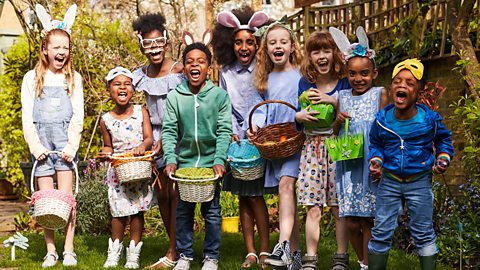Jewish people all over the world are getting ready for Passover.
Passover is one of the most important festivals in Judaism. It remembers the Biblical story of the Exodus, when Jewish people were freed from slavery in Egypt. Celebrations last for seven or eight days, depending on where you live.
Passover begins on the 15th day of the Jewish month called Nisan. As the Jewish calendar is a A calendar based on the phases of the Moon., the dates of Jewish holidays in the The 12-month calendar used in most of the world. It's a solar calendar, which means it's based on the time it takes the Earth to revolve around the Sun once. change every year. In 2024, Passover begins on the evening of Monday 22 April.
If youÔÇÖve heard of this holiday but donÔÇÖt know much about it, we have picked five words that will give you a good understanding of the Passover story and how Jewish families mark this important time of year.

Pesach - The Hebrew name of the holiday
Passover is a translation of Pesach - the holiday's Hebrew name. The word Pesach references a crucial part of the festival's story.
The Book of Exodus says that when the Israelites were enslaved in Egypt, Moses asked the pharaoh to let them go, but the pharaoh refused.
Moses warned him that God would send terrible plagues, but that didn't change the pharaoh's mind. God sent ten plagues to Egypt - the final plague was the death of the first born son.
God told Moses that the Israelites should mark their doorposts with lamb's blood so that the angel of death could 'pass over' their houses and spare them from this plague. This is where the name of the holiday comes from.
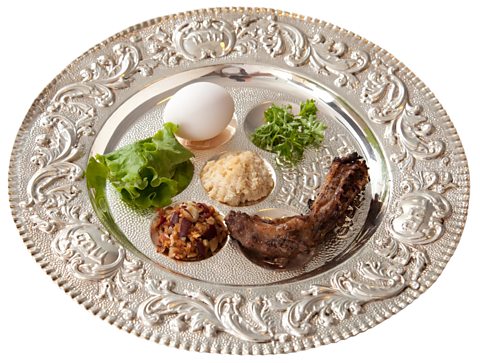
Seder - The Passover meal
On the first night of Passover, Jewish people have a meal called Seder (a Hebrew word which means 'order'.)
During the Seder meal Jewish families will sing, read the Passover story and eat some symbolic foods arranged on a traditional Seder plate. These foods are:
- Bitter herbs (Chazeret) representing the bitterness of slavery
- A hard boiled egg (Beitzah), a symbol of mourning in Judaism
- A sweet fruit and nut paste (Charoset), representing the mortar used for building bricks by the enslaved Israelites in Egypt
- Bitter herbs (Maror), often made from horseradish. Like the Chazeret, they are a symbol of the suffering during slavery
- A lamb bone (Z'roa) representing the lamb that was sacrificed the night before the Israelites left Egypt
- Celery stalks or parsley (Karpas) which are dipped into salted water. Karpas is a symbol of the spring harvest, and the salty water represents the Israelites' tears when they were slaves.
Four small glasses of wine are also part of the Seder, and everyone has a cushion to lean on, as it was customary during meals in ancient times. This is to remind Jewish people that they are now free and no longer slaves.

Haggadah - The Passover book
During the Seder, the story of Passover is read from a book called Haggadah (meaning 'narration').
The Haggadah guides people through the Seder meal, telling the story of the Exodus from Egypt and explaining the Seder rites and traditions.
One part of the Haggadah is traditionally sung or recited by the youngest person at the Seder. This is a set of four questions known as Ma Nishtana, from the first two words of the Hebrew phrase translating as 'Why is tonight different from all other nights?'. The four questions explore the Passover traditions, such as dipping vegetables in salted water, or only eating Matzah.
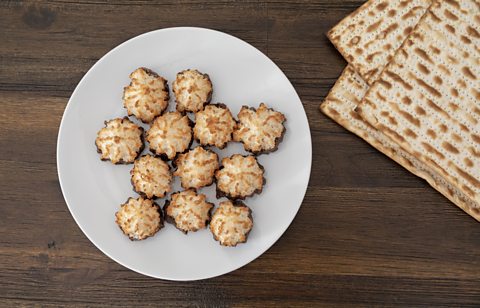
Matzah - Unleavened bread
During Passover, Jewish people will refrain from eating bread and any other foods containing grains that have risen or fermented, such as pasta or cakes.
This is because according to Jewish tradition, when fleeing Egypt, the Israelites couldn't make bread as there was no time for the dough to rise.
Instead of everyday bread, during Passover Jewish people will eat a thin, crispy bread called Matzah or Matzo. Matzah looks a bit like a water cracker and is prepared under very strict conditions to make sure the mixture of water and flour doesn't rise - which would make it unsuitable for Passover.
Three Matzahs are also stacked on the Seder table. The middle one is broken, and the largest piece is hidden in a tablecloth. This is called Afikomen. In some families, parents may hide the Afikomen and ask children to find it in return for a small gift.
Chametz - Food that isn't permitted
Any food that can't be eaten during Passover is known as Chametz. Apart from Matzah, foods made from or containing grains are considered Chametz.
On the lead up to Passover, Jewish people will clean their houses thoroughly to eliminate all Chametz, and some families may have a different set of dishes and cutlery to be used only during Passover.
You may see the label 'kosher for Passover' on certain foods. This means that the products have been made in a strictly Chametz-free environment and can be eaten during Passover.

How to wish a happy Passover
- Chag Sameach (the sound Hebrew sound 'ch' is pronounced like the end of 'loch') means 'happy holiday' and can be used for most Jewish festivals
- You can make this Passover-specific by saying Chag Pesach Sameach

What is Passover?
KS2 Religious Education
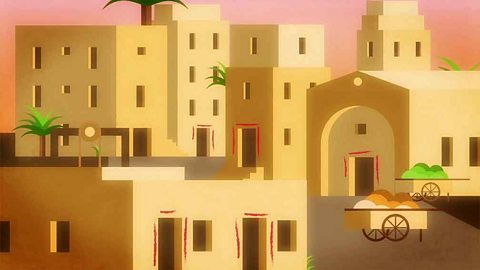
Dreidel, latkes and more
Six words to explore the Hanukkah story and traditions
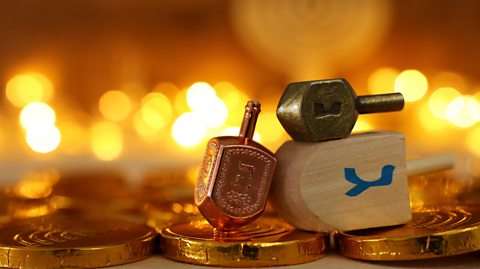
Why does the date of Easter move around?
There's a reason why it's a moveable feast - find out why here.
